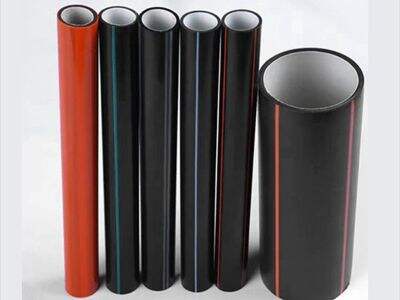Draden en kabels zijn essentiële hulpmiddelen voor het vervoer van elektrische stroom. We gebruiken ze elke dag in ons huis, op kantoor, in fabrieken en vele andere plaatsen. Bijvoorbeeld, wanneer je een licht aanzet of een computer gebruikt, achter de schermen zorgen draden en kabels ervoor dat dit mogelijk is. Qitian is een van de bedrijven die deze producten produceert. Ze hebben gespecialiseerde methoden en technieken om verschillende soorten te fabriceren. 12 core fiber optic cable en draden. Laten we nu stap voor stap ontdekken hoe deze producten worden gemaakt.
We nemen u nu mee door de stappen om kabels en draden te produceren.
Het proces van het maken van kabels en draden bestaat uit verschillende essentiële stappen. Zo werkt het:
Stap 1 — Ontwerpen: De eerste stap is natuurlijk het ontwerpen van de kabel of draad. Ingenieurs bekijken wat de klant precies wil. Ze helpen bij het bepalen van cruciale aspecten zoals het kaliber van de draad, of er extra scherming of isolatie nodig is, of beschermende huizen vereist zijn, en hoeveel voeten de draad moet worden gesneden. Zorg ervoor dat je hier stilstaat, omdat deze stap cruciaal is om te waarborgen dat de klant de kans heeft gekregen om aan te geven wat hij nodig heeft van het eindproduct.
Verwerken van de grondstoffen: ↑↑ Vervolgens bereiden ze de grondstoffen voor om de draden te maken. De meest gebruikte materialen zijn koper en plastic. In deze fase smelten grote machines de grondstoffen. Dit smeltproces maakt het gemakkelijker om de materialen in draden of kabels te vormen.
Extrusie: Nadat de materialen gesmolten zijn, gaat het verder naar de extrusiestap. In dit stadium worden de gesmolten materialen door een machine geduwd die ze in draden of kabels transformeert. Dit wordt gebruikt om de gewenste draadvorm en dikte te bereiken.
Vormgeving en Afkoeling: Wanneer de draden of kabels gevormd worden, moeten ze afkoelen. De gevormde draden of kabels worden geplaatst in een afkoelingszone waar ze vaststellen. Het is belangrijk om deze stap uit te voeren zodat de draden hun vorm behouden en sterk genoeg zijn om te gebruiken.
Kwaliteitscontrole: De draden of kabels ondergaan een kwaliteitscontrole na het afkoelen. Ze worden daarom grondig geïnspecteerd op fouten, zoals luchtbellen, en getest op correcte werking. De draadkwaliteitstests zijn erg belangrijk om te verifiëren of de draad veilig en betrouwbaar is voor praktisch gebruik.
Verpakking: Ten slotte, nadat alles is besproken en gepland, worden draden of kabels verpakt. Dit betekent dat ze in dozen of andere verpakkingen worden gestopt en klaar zijn om aan klanten te worden verkocht. Je wilt dat de draden beschermd blijven tijdens het transport, en een goede verpakking zal helpen bij het beschermen van de draden tijdens het transport en ook ervoor zorgen dat ze gemakkelijk kunnen worden opgeslagen.
De Ontwikkeling van de Productie van Kabels en Draden
In de loop der jaren hebben technologische vooruitgangen de manier getransformeerd waarop 4 core fiber cable en draden worden geproduceerd. Terwijl we elektriciteit steeds meer integreren in onze dagelijkse levens, heeft de industrie verbeteringen en aanpassingen moeten doorvoeren. Om achter te blijven bij deze veranderingen, gebruikt Qitian de nieuwste technologieën om de beste producten te leveren die ze kunnen maken.
Een goed voorbeeld zijn de robots die worden gebruikt in de productie. Deze robots helpen bij de nauwkeurige montage van draden en kabels, wat resulteert in minder fouten en hogere-kwaliteitsproducten aan het eind. Dit geautomatiseerde proces bespaart tijd en verhoogt de productiviteit, wat helpt Qitian bij het bijhouden van de marktvraag naar hun producten.
Een andere opvallende verschuiving is de introductie van nanotechnologie in de industrie. Een speciaal gebied van ingenieurskunde, nanotechnologie, maakt het mogelijk om de druk te beheersen die nodig is om de vorm van de draden te bepalen. Dit zorgt voor producten van hogere kwaliteit die veelzijdiger en duurzamer zijn. Dit geldt vooral voor de miniaturisering 2 core fiber cable en draden die overal aanwezig zijn in moderne technologieën, zoals smartphones en computers.
Productie van Kabels en Draden — Hoe Technologie Hierbij Helpt
Er zijn verschillende voordelen van het gebruik van technologie in elk gebied en ook de productieprocessen van kabels en draden zijn daarin geen uitzondering. Qitian gebruikt robots die computerbestuurd zijn, wat hen in staat stelt om draden en kabels snel te produceren terwijl de kwaliteit van elk exemplaar uniform blijft. Dit betekent dat elke draad die ze produceren dezelfde is als de vorige.
De sleutel hiervan is de mogelijkheid dunnere draden te produceren, een van de grootste doorbraken in de branche ooit. Nieuwe productietechnologieën maken het nu mogelijk om draden met een diameter van 0,2mm te produceren. Dit is een enorme stap voorwaarts omdat veel dunnere draden kunnen worden gebruikt in een breed scala aan scenario's, inclusief in elektronica en zelfs in luchtvaart.


